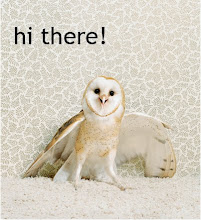sábado, 4 de julio de 2009
Essay: Colors and emotions by me
As Pablo Picasso said “colors, like features, follow the changes of the emotions”. Color is defined as the aspect of the appearance of objects and light sources that may be described in terms of hue, lightness, and saturation for objects and hue, brightness, and saturation for light sources. (Merriam Webster, 2007) Although people usually differentiate things by its color, and relate each color to a similar meaning, they usually don’t know what each color communicates. There are many unknown theories that relate each color to emotions. However, people usually don’t know that colors have psychological associations.
First, it’s necessary to mention that the communicative properties of a color are divided in two categories: natural associations and psychological or cultural associations. The associations of nature colors are universal and timeless (Morton, 2007). For example, the fact that blue is the color of sky.
On the other hand, psychological color association may be a result of traditions, celebrations, political, historical, trends, religion and myths, and more (Morton, 2007). In fact, blue is considered the color of royalty, green with burgesses and money, etc.
In addition, according to the psychiatric Carl Jung “colors express the main psychic functions of man”. Psychological or cultural associations of color can be unrelated to natural associations and varies in different cultures. For example, green’s associations with nature communicate growth, fruitfulness, freshness and ecology. However, green is related with good luck, seasickness, money and greed, all of these have nothing to do with green plants. “These associations arise from a complex assortment of sources”(Morton, 2007).
As well, color meaning may have both positive and negative associations. Although blue is the color of the sky, it can be symbolic of sadness or stability. Also, Red has two meanings. It’s the color of fire and blood, it is an energizing, aggressive and bold color and it’s used for “STOP” signs around the world.
Therefore, Successful designers and painters required an awareness of how and why colors communicate meaning. According to the abstract painter Wassily Kandinsky who created one of the famous theories about color " colors have a purely physical effect and a purely spiritual effect". For example, he associated colors such as yellow to the sound of a trumpet because it projects so much energy and aggressiveness that it hurts the eye after a while. He also explained that “It may be paralleled in human nature, with madness, not with melancholy or hypochondriacal mania, but rather with violent raving lunacy”.
Other Kandinsky’s example about colors related emotions and sounds to music. For this painter, Green it is the most restful color that exists. On exhausted men this restfulness has a beneficial effect, but after a time it becomes wearisome and it also was the bourgeoisie’s colors. On the other hand he mentioned that the silence of black is the silence of death and it’s compared to final pause in music.
As illustration of this theory, when asked to approximate the importance of color when buying products, 84.7 percent of the total respondents think "that color accounts for more than half among the various factors important for choosing products".(Seoul International Color Expo, 2004)
All in all, colors are extremely important because they communicate meanings and had physiological effects on our minds. Through these examples about color meaning and associations with emotions, it’s evident that people get strongly influenced by colors which demonstrate why color matters.
KANDINSKY, W. (1911).Concerning the spiritual in art: The Pyramid. Retrieved December 06, 2007, from
http://globusz.com/ebooks/Kandinsky/00000011.htm
Proverbia(2007). Picasso’s quotes. Retrieved December 06, 2007, from
http://en.proverbia.net/searchquotations.asp?Texto=color
MORTON, J. (2007) . How Color affect us: Symbolism and emotions. Retrieved December 06, 2007, from
http://www.colormatters.com/brain.html
Green, R (2007). Carl Jung Art Quotes. Retrieved December 06, 2007,
http://quote.robertgenn.com/auth_search.php?authid=868
Seoul International Color Expo( 2004). How Color affect us. Retrieved December 06, 2007, from
http://www.colormatters.com/brain.html
Merriam Webster Online (2007). Color. Retrieved December 06, 2007, from
http://www.m-w.com/dictionary/color
Suscribirse a:
Enviar comentarios (Atom)




No hay comentarios:
Publicar un comentario